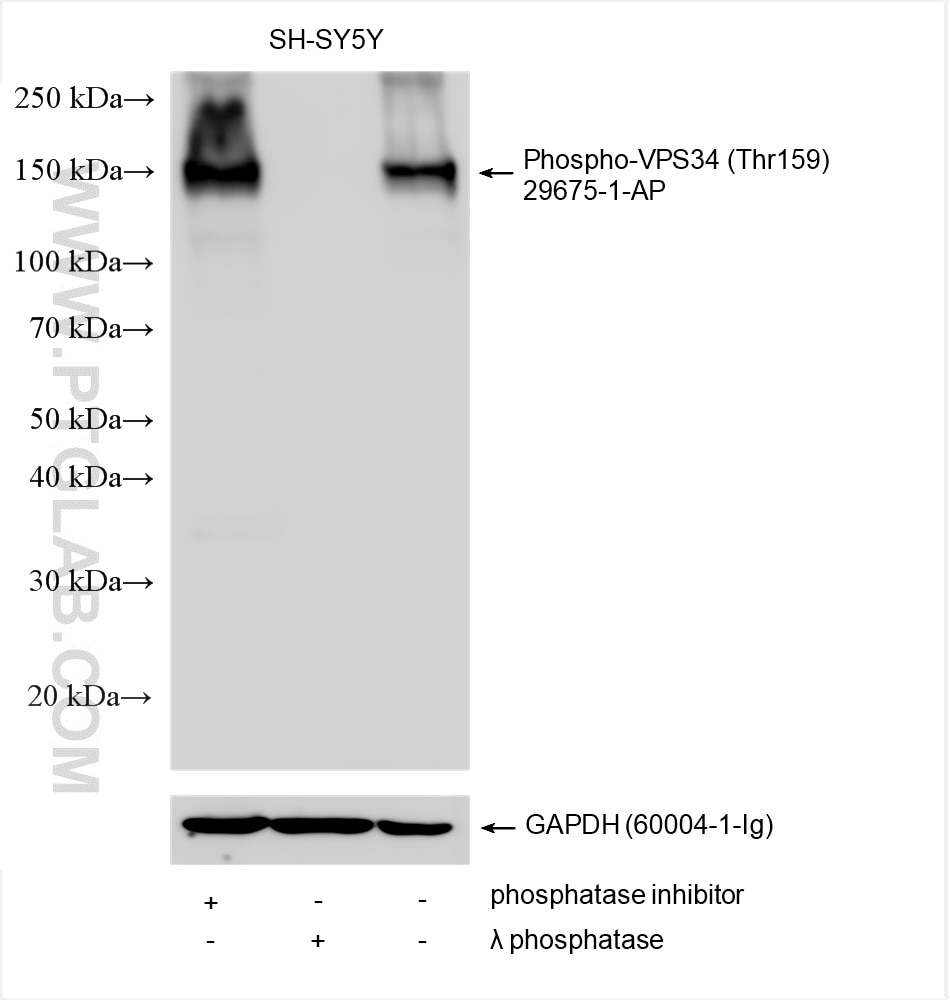Tested Applications
| Positive WB detected in | SH-SY5Y cells, λ phosphatase treated SH-SY5Y cells |
Recommended dilution
| Application | Dilution |
|---|---|
| Western Blot (WB) | WB : 1:2000-1:16000 |
| It is recommended that this reagent should be titrated in each testing system to obtain optimal results. | |
| Sample-dependent, Check data in validation data gallery. | |
Published Applications
| WB | See 1 publications below |
Product Information
29675-1-AP targets Phospho-VPS34 (Thr159) in WB, ELISA applications and shows reactivity with human samples.
| Tested Reactivity | human |
| Cited Reactivity | human |
| Host / Isotype | Rabbit / IgG |
| Class | Polyclonal |
| Type | Antibody |
| Immunogen | Peptide Predict reactive species |
| Full Name | phosphoinositide-3-kinase, class 3 |
| Calculated Molecular Weight | 102 kDa |
| Observed Molecular Weight | 150 kDa |
| GenBank Accession Number | NM_002647 |
| Gene Symbol | VPS34 |
| Gene ID (NCBI) | 5289 |
| RRID | AB_3669693 |
| Conjugate | Unconjugated |
| Form | Liquid |
| Purification Method | Antigen affinity purification |
| UNIPROT ID | Q8NEB9 |
| Storage Buffer | PBS with 0.02% sodium azide and 50% glycerol, pH 7.3. |
| Storage Conditions | Store at -20°C. Stable for one year after shipment. Aliquoting is unnecessary for -20oC storage. 20ul sizes contain 0.1% BSA. |
Background Information
VPS34 phosphorylates phosphatidylinositol to produce PtdIns3P and is the progenitor of the phosphoinositide 3-kinase (PI3K) family. VPS34 has a simpler domain organization than class I PI3Ks, which belies the complexity of its quaternary organization, with the enzyme always functioning within larger assemblies. (PMID: 30397185)
Protocols
| Product Specific Protocols | |
|---|---|
| WB protocol for Phospho-VPS34 (Thr159) antibody 29675-1-AP | Download protocol |
| Standard Protocols | |
|---|---|
| Click here to view our Standard Protocols |



